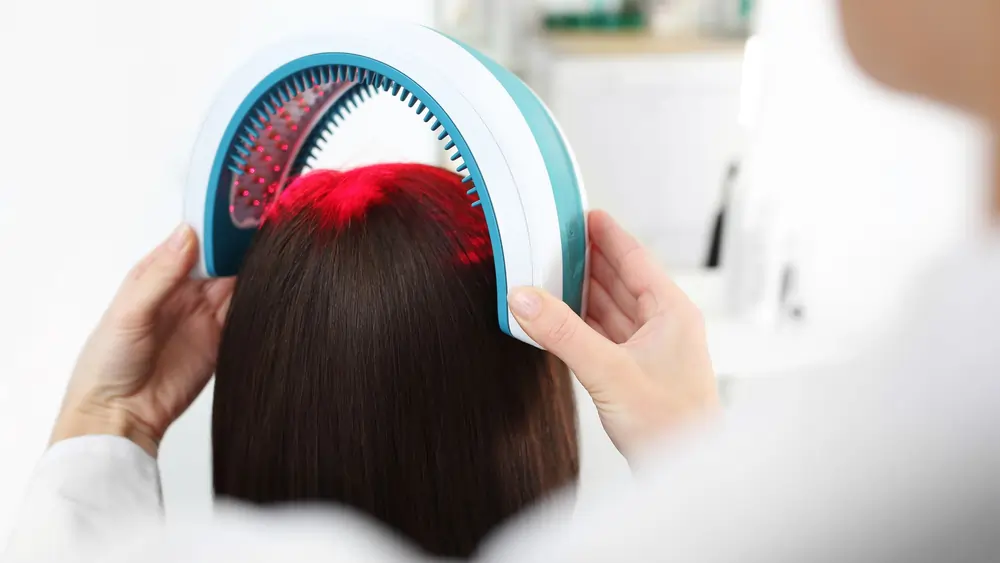Hair loss is a common concern that affects millions of people worldwide. While there are various treatments available, hair transplantation has emerged as a highly effective and long-lasting solution. One crucial aspect of a successful procedure is the precise calculation hair transplant grafts calculation, which involves both artistry and scientific precision.
Understanding Hair Transplant Grafts
A hair transplant involves moving hair follicles from a donor site (usually the back or sides of the head) to the recipient site (areas with hair loss). The grafts, or follicular units, are the building blocks of this process. Each graft can contain one to several hairs, and the surgeon’s skill lies in calculating the optimal number of grafts needed to achieve natural-looking results.
Factors Influencing Hair Transplant Grafts Calculation
Recipient Site Characteristics: The size of the balding area: The extent of hair loss in the recipient site plays a significant role in determining the number of grafts required. Larger areas may necessitate more grafts for adequate coverage.
Hair density: The existing hair density in the recipient site affects the number of grafts needed. Higher density may require more grafts to achieve a seamless blend between transplanted and existing hair.
Donor Site Availability: The density of hair in the donor site sets the limit for the number of grafts that can be harvested. Careful consideration is given to ensure that the donor area retains a natural appearance after extraction.
Graft Type: Single follicular unit (1 hair), double (2 hairs), or triple (3 hairs) follicular units; The choice of graft type depends on factors such as hairline design and the need for natural-looking results. Surgeons strategically use different graft types to achieve the desired aesthetic.
Hair Characteristics: The characteristics of the patient’s hair, such as thickness and texture, influence the graft calculation. Matching these characteristics with the recipient site ensures a harmonious and natural appearance.
The Hair Transplant Graft Calculation Process
Hair transplant surgeons employ both manual and automated methods for graft calculation as part of the hair transplant process. Manual methods involve visual estimation and experience-driven judgment. Automated methods, on the other hand, use specialized software to assess factors such as follicular unit density and distribution.
The surgeon meticulously plans the distribution of grafts, considering the natural hair growth pattern and designing a hairline that complements the patient’s facial features. This artistic aspect is crucial in achieving a result that not only covers the balding areas but also looks entirely natural.
Advanced Techniques in Hair Transplant Grafts Calculation
With the rise of robotic-assisted procedures, hair transplant grafts calculation has reached new levels of precision. Robots can perform accurate graft extractions and placements, guided by algorithms that consider factors such as hair density, angle, and direction. This technological advancement not only streamlines the process but also ensures consistent and reliable results.
Artificial Intelligence (AI) has found its way into the realm of hair transplantation, offering predictive models for graft calculation. These AI algorithms analyze vast datasets of successful transplant outcomes, learning and adapting to various patient characteristics. Integrating AI into the calculation process enhances the ability to predict graft requirements based on individual parameters.
Patient-Centric Approach in Hair Transplant Grafts Calculation
- Customized Treatment Plans: Recognizing the uniqueness of each patient, modern graft calculation methods emphasize personalized treatment plans. Clinicians consider factors like the patient’s age, overall health, and specific hair characteristics to tailor graft numbers and distribution, ensuring a bespoke approach that aligns with individual aesthetic goals.
- Virtual Reality (VR) Simulations: The incorporation of virtual reality simulations in graft calculation consultations allows patients to visualize potential outcomes. Surgeons can use VR to illustrate the distribution of grafts, the expected hairline, and the overall impact of the transplant. This interactive approach aids in better communication between the surgeon and the patient, fostering realistic expectations.
Preoperative Considerations for Hair Transplant Grafts Calculation
Before embarking on a hair transplant procedure, a comprehensive scalp assessment is crucial. Surgeons evaluate the laxity of the scalp, potential scarring from previous surgeries, and the overall health of the donor area. These considerations influence the feasibility of graft extraction and contribute to the accurate calculation of grafts.
Assessing the blood supply to the recipient site is vital for graft survival. Additionally, understanding the patient’s healing capacity and any potential complications guides surgeons in determining the optimal number of grafts to transplant in a single session, ensuring both safety and efficacy.
Summary: Hair transplant Grafts Calculation
Hair transplant grafts calculation is a meticulous process that combines medical expertise, artistic skill, and technological precision. Achieving optimal results requires a thorough understanding of the patient’s unique characteristics, coupled with the surgeon’s experience and proficiency. As the field of hair transplantation continues to evolve, innovations in graft calculation techniques contribute to more personalized and effective solutions for individuals seeking to restore their hair and confidence.
Hair transplant Grafts Calculation Sources
National Library of Medicine: Graft Anchoring in Hair Transplantation




